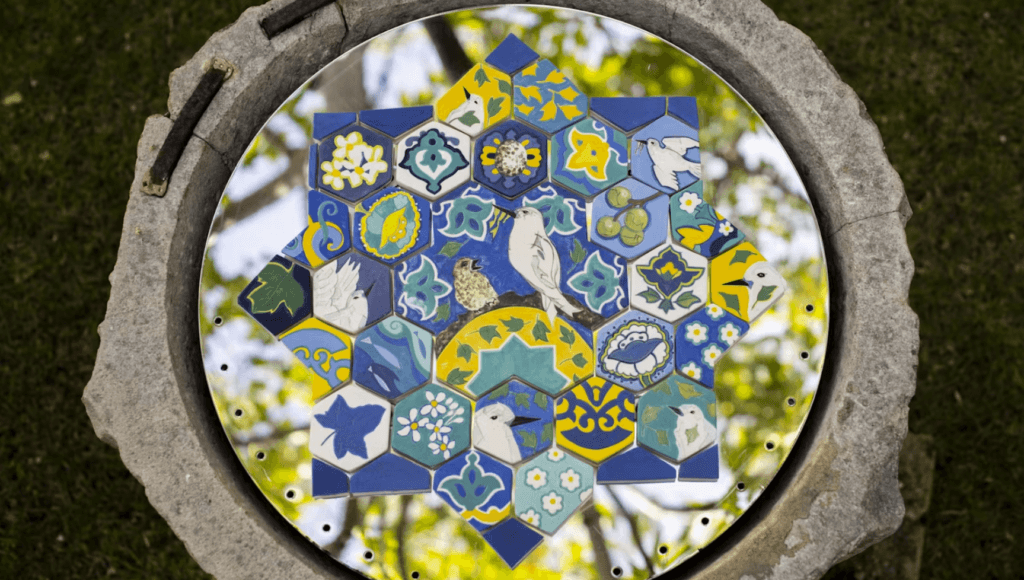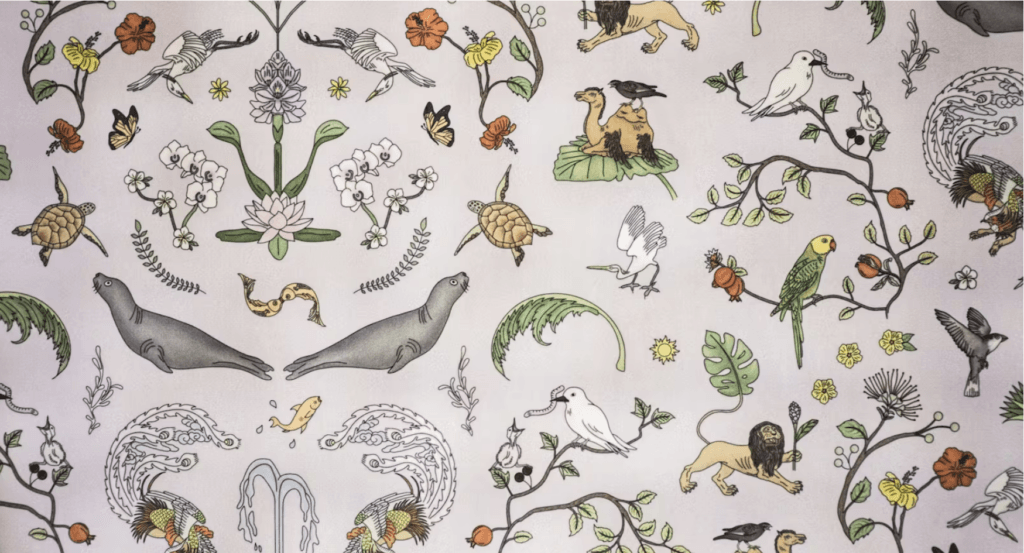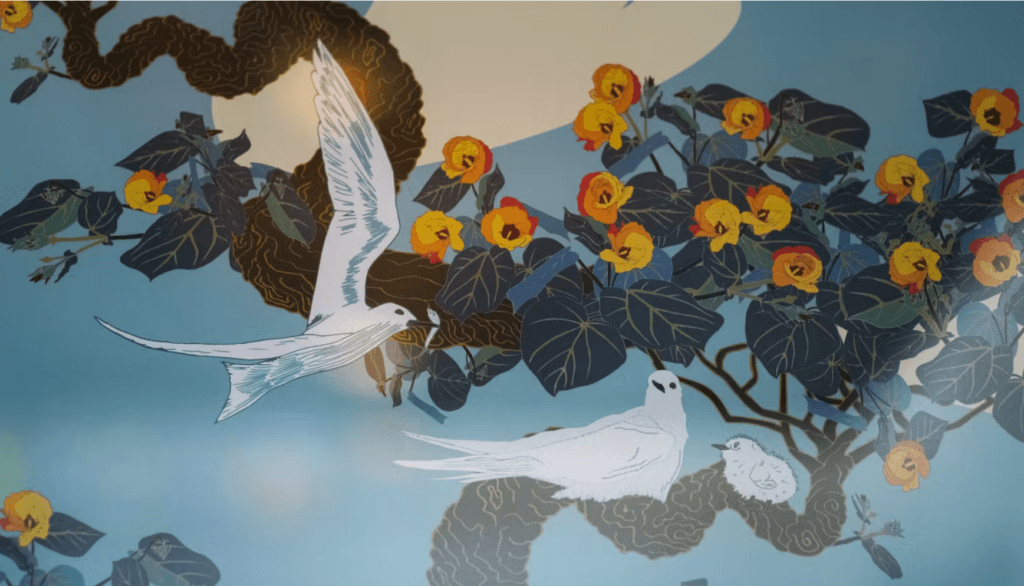Happy World Wildlife Day!
In amplification of World Wildlife Day, we are celebrating the manu-o-Kū (Gygis alba) that’s found across our center campus at Shangri La. The manu-o-Kū has had journey to survival in Honolulu area since the 1970’s with only a few birds remaining in existence to now having grown to a population over 2,300+!

Artists have always been such significant stewards of how we need to protect and restore nature and native species. Check out the three artists we’ve highlighted from our past exhibitions that have brought awareness to the manu-o-Kū!

Harinani Orme
Manu-o-Kū: Shangri La’s Living Treasure, 2022
Painted and Glazed Tile Mosaic
Artist Statement:
“This piece invites visitors to explore, reflect and enjoy the unique depiction of flora and fauna found in the tile work of Shangri La’s Central Courtyard. These handcrafted tiles are inspired by the decorative traditions of Islamic tile design and patterning, and by depicting the Manu-O-Kū birds at Shangri La. Designated as the official bird of the city of Honolulu in 2007, this bird has great relevance for our islands as a guide for Polynesian voyagers. The story of this elegant seabird, told in Doris Duke’s private garden, captures the spirit and atmosphere of Shangri La by its grace and beauty.”

Lauren Trangmar
Jannah, 2021
Dye Sublimation Printing on Polyester Fabric

David Shepard
Manu-o-kū & Flowering Hau Tree
Giclee on Paper, Silk with Dyes
Artist Statement:
A past Hawaiʻi echoes with visions of a future one, for now, in this fixed space. My artwork serves to anchor the entry into Shangri La with a sense of place, of source. Images are hand drawn in pen and ink and then turned into continuous repeating vector pattern illustrations using Adobe Illustrator. Close-ups of the art hang on the east and west walls. Silk banners drape from the ceiling to show the complete illustration in fabric form.
Manu-o-kū birds soar, nest and fish amongst the coastal flowering Hawaiian hau trees. The hau flowers last only a single day each, going from yellow at dawn to orange and red as the day ends. The yellow color scheme symbolizes dawn and the blue color scheme evening. The manu-o-kū, also known as the white tern, holds deep cultural and ecological significance in Hawaiʻi. When seen out at sea, these graceful birds are natural indicators to seafarers that land is near. Like fishermen, they go out to sea in the mornings to fish and return to shore in the evenings.
hey were once rare in Hawaiʻi, except in the remote northwestern Hawaiian Islands. Their comeback since the 1970s in urban Honolulu is a testament to dedicated community conservation efforts, while echoing the timeline of the Hawaiian cultural renaissance. Here at Shangri La, these birds can be seen regularly coming and going out to sea as well as nesting on site, as they would have done for millennia in the shadow of Lēʻahi (Diamond Head). Honolulu has also implemented measures to protect the trees where they are actively nesting from disturbance, marking them with a blue ribbon around the trunk.
Visit https://www.whiteterns.org to find valuable information, resources and opportunities for contributing to the protection and preservation of the natural and cultural heritage of the manu-o-kū.
If you’re looking for even more conservation and stewardship stories, check out Duke Farms! Duke Farms is our East-Coast center of the Doris Duke Foundation in Hillsborough, New Jersey!
